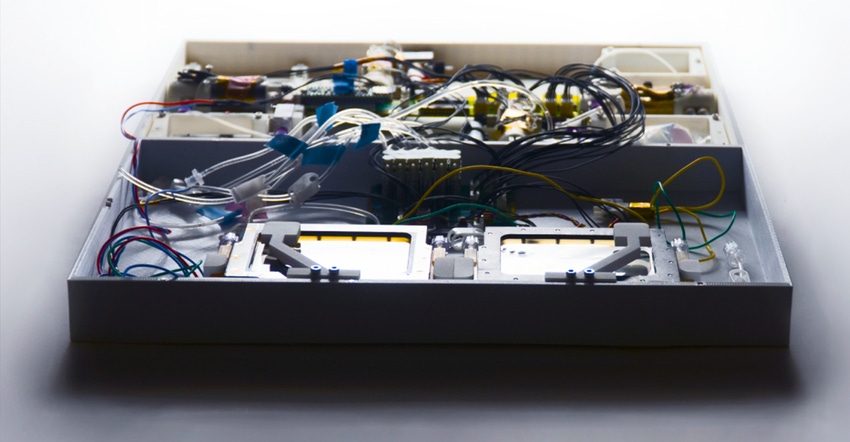Seed Health Tests Upcycling in Space
Seed Health, a microbiome science company, is funding a research project that involves using microbes to break down polyethylene terephthalate (PET) hoping to be able to upcycle it– in space.

Seed Health, a microbiome science company, is funding a research project that involves using microbes to break down polyethylene terephthalate (PET) hoping to be able to upcycle it– in space.
The technology has been proven in a lab on Earth and the next step was to assess the system’s viability during a month aboard the International Space Station in low-Earth orbit, which launched from Kennedy Space Center late in 2022. Now the research team is poring over data brought back from the preprogrammed bioreactor, developed by MIT Media Lab, which allowed for biological experiments to be autonomously run and monitored in orbit without human intervention.
If the results from the cultures and data captured show the space experiment was successful, the scientists hope to expand their research, and one day be able to not only recycle but upcycle materials while in space.
Why leave the planet to figure out how to recycle or upcycle?
Xin Liu, an engineer from MIT Media Lab, explains: “We sent the bioreactor to space to understand how the impacts of microgravity and radiation may act as catalysts for sustained, enhanced bioactivity, potentially allowing for more efficient biological upcycling.”
Microgravity and radiation are conditions unique to space, providing opportunity to understand and optimize the survival of plastic-eating bacteria strains and bacteria-derived enzymes in a way that otherwise would be impossible. Key learnings will be applied to experimentation on Earth.
The system uses an enzyme called PETase to breakdown the PET into its building blocks, and then utilizes an engineered bacteria to convert those building blocks into a chemical that can be polymerized into a high-performance nylon material. The nylon is potentially usable in multiple applications, including clothing, machine parts, and construction materials, all of which have applications for space travel, like spacesuits and spacecraft replacement parts.
“Using microbes, you can program the creation of a super diverse array of products from the same feedstock. This would empower the future of space exploration not just by enabling material circularity while in space [possibly extending mission times] but by providing space travelers the on-demand choice of what materials to upcycle,” says Allison Werner, a biologist from the National Renewable Energy Laboratory D.C. Office (NREL), also involved in the research.
What’s envisioned is that while on their missions they’d select a freeze-dried vial corresponding to a particular engineered bacteria strain to create a product for an end use, maybe a spacesuit thread, fuel, or food.
But the idea is to take on the persistent plastics waste problem on Earth too.
It’s unclear how long it takes for plastics to completely biodegrade. Estimates range from 450 years to never. And they break down into potentially dangerous microparticles says Raja Dhir, co-founder and co-CEO of Seed Health.
“They end up in marine environments, negatively affecting their resident microorganisms and can make their way into the human digestive tract through food, water, the products you use, and even the air you breathe [contributing to multiple health conditions] which can have cascading systemic effects on your body.
“By reconfiguring PET into materials that can be reused we are reimagining how long plastics can last in the environment but in more useful ways,” Dhir says.
This project’s history began in 2020 when Seed Health’s director of Research and Development connected the company with Liu, who had a unique opportunity to conduct research aboard the International Space Station.
“We began with a question: Could microbes eat our space trash? The research then evolved into an area with both Earth and space-bound potential, as we sought to discover new biological mechanisms to target the plastic crisis,” Dhir says.
So far at the Earth-bound lab fibers have been created from upcycled material and used for property testing.
“We’re excited to see how this material could potentially be deployed industrially at-scale, especially from renewable feedstocks such as bioenergy crops or waste materials such as plastics,” Werner says.
The microbes degrade and catabolize human-made plastics as carbon and energy sources. This new technology takes that biological process one step further, microbially upcycling those degraded materials to make nylon monomers for use in multiple applications.
The early research and development focus so far is on trying to optimize the material bioconversion process on Earth.
Out in space more information was obtained that will be used to determine how well the hardware and the biological wetware performed in low-Earth orbit.
“Learning how the systems perform, either better or worse, will allow us to engineer the system for better performance both on Earth and in low-Earth orbit,” Werner says.
They’ve already gained some insight, including around the unpredictability of space flight, relieved to find the system was able to recover from multiple power failures in the space station.
This expedition follows earlier work of Seed Health, under SeedLabs, to advance microbially-derived technologies to improve environmental health. Other initiatives include the development of probiotic innovations for honeybee preservation and coral reef regeneration.
About the Author(s)
You May Also Like




